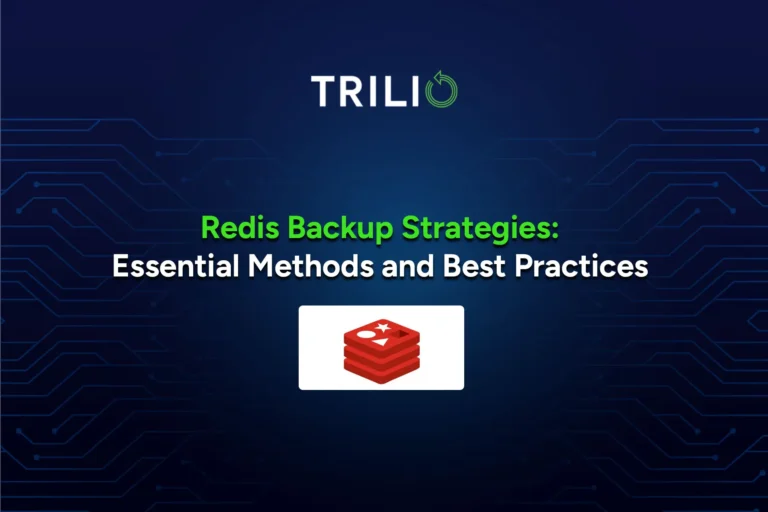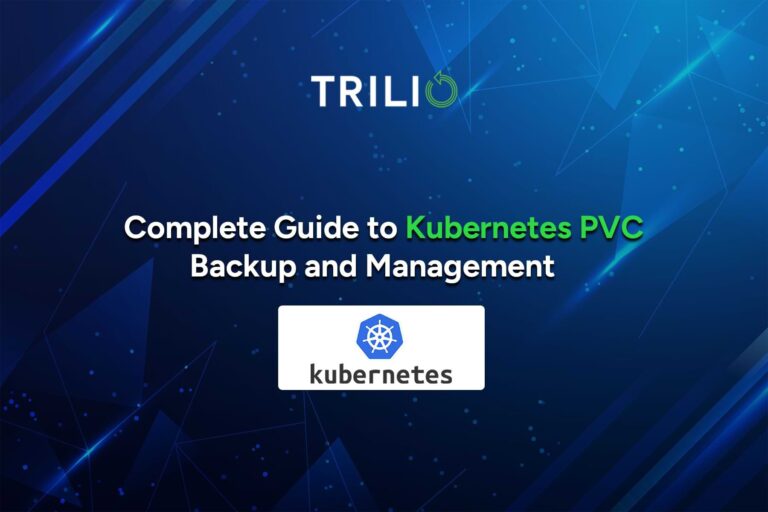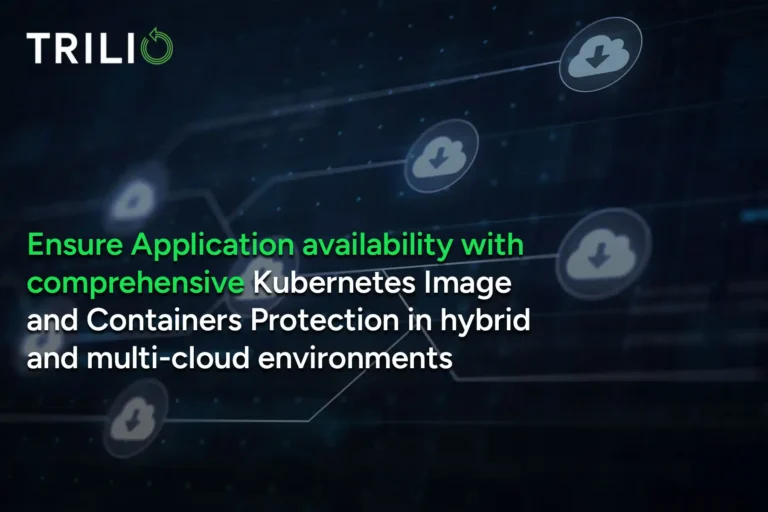Introduction
Kubernetes has revolutionized the world of container orchestration, empowering organizations to build and manage complex container-based applications at unprecedented scale. One of the critical responsibilities of Kubernetes administrators is ensuring the availability and recoverability of their clusters, applications, and data in the event of a disaster. This is where disaster recovery (DR) solutions like Trilio come into play, and when combined with object storage providers like Wasabi, the combination creates a robust and cost-effective solution for Kubernetes Disaster Recovery.
In this blog post, we will delve into the importance of Kubernetes disaster recovery, the key features of Wasabi and Trilio, and how you can leverage these tools to ensure the resilience required and availability of your Kubernetes clusters.
Disaster Recovery in Kubernetes Environments
Kubernetes clusters are dynamic and distributed environments, making them susceptible to various failure scenarios, including hardware failures, data corruption, accidental deletions, and even natural disasters. Without a well-thought-out DR plan in place, organizations risk significant downtime, data loss, and potential financial losses.
Here are some critical drivers for disaster recovery:
Business Continuity: Downtime can have a severe impact on business operations, customer satisfaction, and revenue. A robust DR strategy ensures that critical applications and services are restored in a timely manner.
Data Integrity: Data is the lifeblood of modern organizations. In today’s world of cyber-savvy bad actor’s ransomware has emerged as a rapidly growing global menace. Safeguarding the integrity and accessibility of your data is paramount, and Disaster Recovery Solution plays a vital role in achieving this.
Compliance: Numerous industries have strict regulatory requirements about data retention and recovery. Implementing a Kubernetes Disaster Recovery plan enables organizations to meet their compliance obligations and shield themselves from potential penalties and fines.
Wasabi - Affordable and Scalable Object Storage
An advantage Wasabi provides is reduction in costs while maintaining performance and security. They do this through flat-rate pricing with no hidden fees. Using this service costs less than other cloud storage providers, such as AWS S3 or Azure Blob Storage. These providers do not charge for ingress of data, but they charge a lot when you want to retrieve it (egress cost). Wasabi has removed this charge. Wasabi only charges when the amount of data you take out is larger than the amount of storage you consume every month. For further research, please look below in the footnotes for a cost comparison. Some examples of features include:
-
Quick Uploads & Downloads – Reduce backup windows and increase RTO/RPO
-
S3 Object Lock for Immutable Backups – Protect against ransomware or accidental deletions with free storage immutability.
-
Control – Strong identity and access management, including multi-factor authentication.
Trilio - Kubernetes Data Protection and Recovery
The architecture of Trilio for Kubernetes is like the architecture and operating model of Kubernetes environments. You do not have to learn any new concepts or frameworks to operate Trilio for Kubernetes. This native solution addresses several attributes that make recovery for both stateless and stateful applications running in Kubernetes clusters efficient and flexible.
Key features of Trilio include:
Application-Centric Backup: Trilio technology understands the structure and dependencies of Kubernetes applications including metadata and data, allowing for application-consistent backups. Trilio provides a means to express application hooks (the ability to inject commands before and after a backup and restore) and the order in which these hooks are executed to achieve application-consistent backups.
Incremental Backups: Trilio’s disaster recovery platform supports forever incremental backups after the first full backup (concatenating diffs). This provides both space savings and efficient network bandwidth use. The result is less storage and network bandwidth costs.
Multi-Cloud Support: Trilio offers the capability to store backups in a range of cloud or on-premises environments. With Trilio, managing application and data across Kubernetes clusters and cloud providers such as Amazon AWS, Microsoft Azure and Google GCP is achieved through a unified, centralized interface.
Solving Kubernetes Disaster Recovery with Wasabi and Trilio
Let us see how Wasabi and Trilio can work together for a strong disaster recovery plan.
-
Backup Kubernetes Workloads: Use Trilio to perform regular backups of your Kubernetes workloads, including both application data and configuration.
-
Store Backups in Wasabi: Leverage the cost-effective storage capabilities of Wasabi to store your secure Trilio backups.
-
Disaster Recovery Plan: Develop a comprehensive disaster recovery plan that outlines the steps for recovering your Kubernetes clusters and applications from backups stored in Wasabi.
-
Automated Recovery: Trilio offers automation capabilities to streamline the recovery process, ensuring that your applications can be quickly and reliably restored in the event of a disaster.
-
Regular Testing: Test disaster recovery plans to ensure that they work as expected. Trilio provides tools for automated testing and validation of backups.
I hope I have convinced you to explore Disaster Recovery for Kubernetes and the benefits that Partners like Wasabi offer. If you would like, reach out, I would be more than happy to chat further.
Conclusion
Kubernetes disaster recovery is a critical aspect of maintaining the resilience and availability of your containerized applications. By combining the cost-effective storage of Wasabi with the powerful data protection and recovery capabilities of Trilio, organizations can create a robust and efficient Kubernetes disaster recovery strategy.
By using Wasabi to store application-consistent backups and automating the recovery process with Trilio, you can ensure that your Kubernetes clusters are prepared for any disaster scenario, minimizing downtime and data loss. Invest in Kubernetes disaster recovery today to safeguard your business and data against the unexpected.




